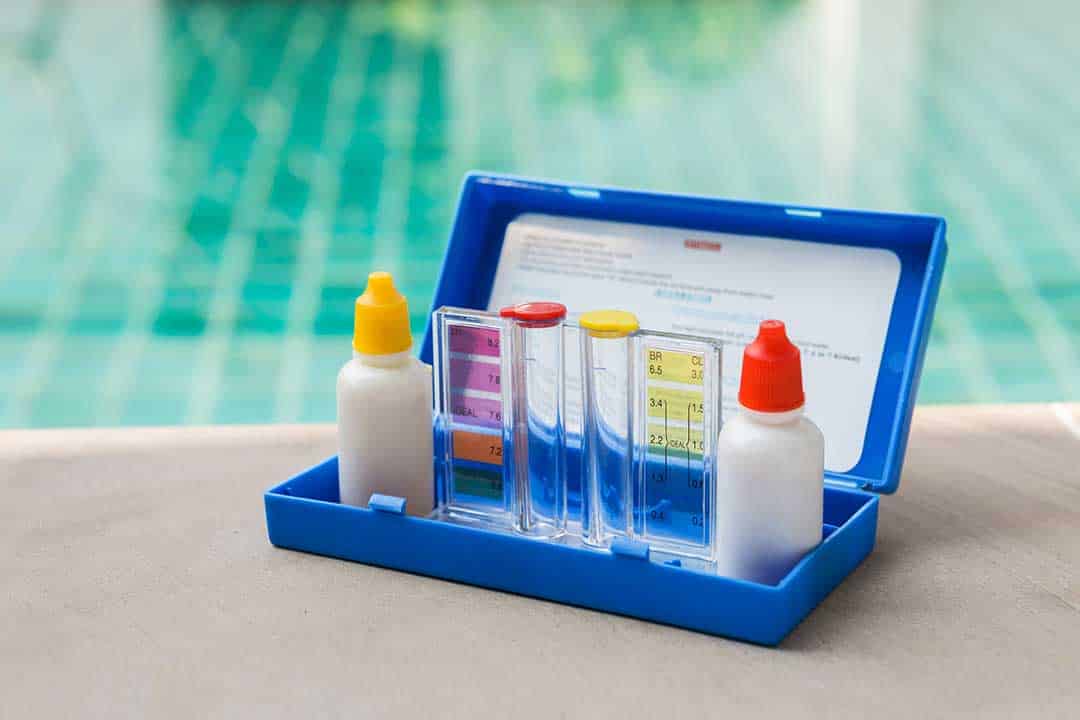
Calcium buildup in pools is when you see a white to white-grey stain, dust, or film on the sides or tiles. This happens when the calcium levels and pH in the pool are not balanced. But do not worry, you can easily prevent calcium buildup by regularly testing and balancing the water. The amount of calcium scaling your pool gets depends on how porous the pool material is. For example, concrete pools are the most porous, while vinyl liner and fiberglass pools are the least porous.
Removing calcium scales may be challenging, but it can be done. You can also take steps to prevent them from forming again. If your pool has calcium buildup, here is how you can identify the type of calcium and treat it to stop it from coming back.
There are two types of calcium scales that can form in pools: calcium carbonate and calcium silicate. Calcium carbonate is white and flaky, and it is easy to remove. On the other hand, calcium silicate is white-grey and more difficult to get rid of.
Because calcium silicate takes longer to form, pools with calcium silicate buildup on the walls often have scaling in their pipes too. If your pool has calcium silicate scaling, you may need to hire a professional to remove the deposits from the pool and filtration system.
To determine the type of calcium scaling in your pool, put a few drops of muriatic acid on a deposit. Make sure you follow safety precautions and wear goggles when working with acids. Calcium carbonate will react with the acid and foam, while calcium silicate will not. If you are unsure, it is best to contact a pool professional.
If your pool has calcium carbonate deposits, you can remove them using a pumice stone, stain eraser, or scale remover.
A pumice stone is suitable for hard surfaces like tile and concrete. Wet the stone and the surface you are scrubbing to avoid scratching. Gently scrub the deposits with the stone.
Many stain erasers available in stores can also remove calcium carbonate. These products are designed for effortless application with a vac pole. Follow the instructions provided by the manufacturer if you choose to use a stain eraser.
Downunda recommend Jacks Magic, they offer calcium scaling treatments that are safe for all pool surfaces, including fiberglass, vinyl liner pools, and concrete pools. These treatments are added to the pool water and dissolve the deposits over a few weeks.
The most reliable way to remove calcium silicate deposits is by using a pumice stone, but it requires a lot of arduous work. These stains are notoriously difficult to scrub away.
If you have a vinyl or fiberglass pool, a pumice stone may scratch the pool, so it is not recommended. In such cases, you should contact a pool service provider in your area for professional products that can quickly remove the deposits.
If you have ever wondered about the white chalky residue in your pool, it is probably calcium buildup. As mentioned earlier, calcium scaling occurs when there is an imbalance between the calcium levels and pH in the pool. To prevent future calcium buildup, you need to address these two factors. Preventing calcium scaling is easy if you regularly test your water and maintain your pool.
Lower the pH level of your pool water because pH has a bigger impact on calcium scaling than calcium levels.
Help to reduce evaporation, when water evaporates, it can leave behind calcium deposits.
Do not let calcium dust ruin the beauty of your pool. If your pool has calcium deposits, identify the type of calcium using a muriatic acid test and then remove them, even if it means calling a pool service provider. Once the deposits are gone, take precautions to prevent their return by lowering the pool's pH.